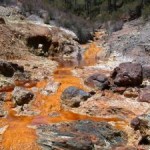John Cossham of York, UK and Rory Rickwood of Nanaimo, British Columbia, Canada have launched a new website that identifies problems and argues that society is not working hard enough to find solutions to the relatively taboo subject of an impending ecological disaster involving the practice of cremation and traditional burials. Their new website, www.novaterium.com, presents a worldwide directory of green burial sites and green funeral information. Symbolizing the need to find new methods for disposing of human remains is the newly created word, “Novaterium”, from the Latin “nova”, meaning “new”, and “cometerium”, a tract of land for burials.
“We are not working hard enough to reduce the risks associated with cremation and traditional burials”, said Rickwood. “We developed the Novaterium website to expose the ecological issue facing us and to challenge the funeral and cemetery industry to provide environmentally sound services.”
Wikipedia reports that roughly 150,000 people die each day across the globe, 54 million each year. There is evidence that cremation and traditional burial practices can cause ecological damage.
In 1988, The New York Times forewarned that cemeteries were running out of space. In the UK about 70% of funerals are cremations, due to a growing lack of space in church graveyards and urban cemeteries.
The cremation process uses between 50 to120 cubic meters of natural gas to incinerate the coffin with the body inside. It has been estimated that there is 400 kg of CO2 emissions released into the atmosphere with one cremation event, and crematoria can release other pollutants when incinerating surgical implants and mercury from tooth fillings.
Traditional burials use valuable, often urban, land, and have their own air pollution footprint due to the depth of burial, creating anaerobic conditions meaning the corpse decays to methane, another greenhouse gas. Additionally, wooden caskets may be imported rainforest timber, or may be reconstituted boards using glues and varnishes, which may pollute groundwater or add to crematoria emissions.
According to Cossham, the funeral and cemetery industry are in the best position to move to greener methods when providing services to the public. “New technology could make funerals less polluting, and some greener alternatives are already available, although not yet widely used,” said Cossham. “Our Novaterium website tries to answer the question, ‘what are the alternatives to traditional burial and cremation?’”
The Novaterium website will keep the public updated on the progress on green funeral solutions, and will continue to encourage the funeral and cemetery industries to lobby for regulatory changes that will allow them to offer more eco-friendly services to the public.











